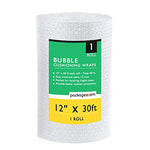You have no items in your shopping cart.
Maggots are intriguing creatures that often provoke disgust and curiosity. These small, legless larvae commonly associated with decomposition can be found in various environments, including rotting food, animal carcasses, and even human wounds. Many wonder about the ultimate fate of these squirming larvae and whether they undergo metamorphosis to transform into a different organism. In this article, we will delve into the captivating life cycle of maggots and explore the question: do maggots turn into flies?
The Life Cycle of Diptera
Eggs: The Beginning of Life
The life cycle of dipteran insects, which include flies, starts with the deposition of eggs. Female flies lay their eggs in suitable environments, such as decaying organic matter or animal hosts. The number of eggs laid varies depending on the species, ranging from a few to hundreds or even thousands. These tiny, oval-shaped eggs are usually white or translucent, and they serve as the first stage of the maggot's development.
Larvae: The Maggot Stage
Upon hatching, the eggs give rise to the larval stage, commonly known as maggots. Maggots possess voracious appetites and thrive by feeding on decomposing matter. This diet provides them with the necessary nutrients for growth and development. As maggots grow, they shed their exoskeletons, a process called molting, allowing them to increase in size.
Pupae: The Transformation Begins
After reaching a certain size, maggots enter the next phase of their life cycle: the pupal stage. At this point, the maggot undergoes a remarkable transformation inside a protective casing called a puparium. The puparium can vary in appearance, ranging from a hard, dark shell to a leathery case. Within the puparium, the maggot's body undergoes significant changes as it prepares for the final stage of its development.
Adult Flies: The Emergence
Following the pupal stage, adult flies emerge from the puparium. This emergence is a remarkable event, marking the completion of the fly's life cycle. As adult flies, they possess wings and are capable of flight, allowing them to disperse and seek mates for reproduction. The appearance and behavior of adult flies can vary greatly among different species, with an extensive array of colors, shapes, and sizes.
Frequently Asked Questions (FAQs)
1. Do maggots turn into flies?
Yes, maggots do turn into flies. Maggots are the larval stage of flies and undergo a complete metamorphosis, transforming into adult flies during their life cycle.
2. How long does it take for maggots to turn into flies?
The duration of the maggot-to-fly transformation depends on various factors, including the species of fly and environmental conditions. In general, it can take anywhere from a few days to several weeks for maggots to develop into adult flies.
3. Can maggots turn into other insects?
No, maggots do not turn into other insects. Maggots are specific to the order Diptera, which includes flies. Each insect order follows its own unique life cycle and developmental pathway.
4. Are all flies born as maggots?
Yes, all flies are born as maggots. The larval stage is a universal feature of flies, and it is during this stage that they feed and grow before transforming into adult flies.
5. Can maggots survive without becoming flies?
No, maggots cannot survive without undergoing metamorphosis to become flies. The adult fly stage is essential for their reproduction and continuation of the species.
6. Are maggots harmful to humans?
While maggots are often associated with unhygienic conditions and decomposition, not all maggots are harmful to humans. Some species of maggots, such as medical maggots, are even used in certain therapeutic practices to aid in wound healing.
Conclusion
Maggots, with their peculiar appearance and association with decomposition, can spark curiosity about their life cycle. From the humble egg to the voracious maggot and the pupa that silently undergoes transformation, the journey of maggots culminates in the emergence of adult flies. Understanding the life cycle of flies can help us appreciate the intricate processes of nature and the remarkable transformations that occur within it.
So, the next time you encounter maggots wriggling around in their natural habitat, remember that they are just temporary residents in their larval form, destined to fulfill their destiny as magnificent flies. Embrace the marvels of the natural world and ponder the intricate life cycle of these fascinating creatures.








